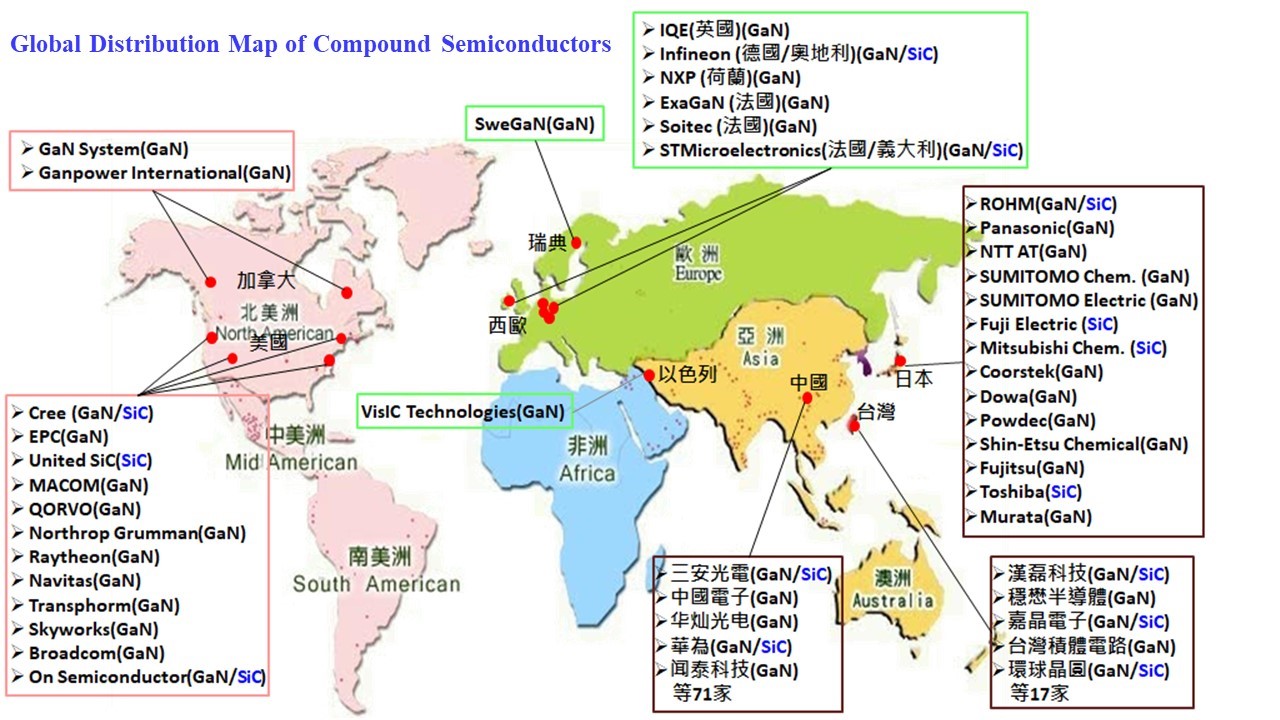Deep Learning for Intelligent Transportation Systems in Long-term Care 2.0 Plan

Author(s)
Kenneth TaiBiography
Kenneth Tai, Chairman of the Photonics Industry & Technology Development Association (PIDA), graduated from the Institute of Electrical and Control Engineering, NYCU, and also obtained a Master's degree from the Institute of Science and Management, TKU. Mr. Tai is currently chairman of InveStar Capital, Digitimes, and CEO of Jasper Display Corp.
Academy/University/Organization
Photonics Industry & Technology Development Association-
TAGS
-
Share this article
You are free to share this article under the Attribution 4.0 International license
- ENGINEERING & TECHNOLOGIES
- Text & Image
- April 14,2021
With the advent of the era of 5G and electric vehicles, high frequency, high power, and wide band gap RF and power components have also become market requirements. Therefore, compound semiconductors, including gallium nitride (GaN) and silicon carbide (SiC), have become the focus of attention. In view of the importance of compound semiconductors, in 2021, PIDA published a special issue, "Compound Semiconductor Technology Roadmap," which is the first reference book written for compound semiconductor technology in Taiwan, and which provides a complete and clear introduction to the industry. PIDA’s aim is to help Taiwan-related companies to establish the core technology and supply chain of compound semiconductors with this special issue, and hopes that Taiwan will have a good grade in the compound semiconductor industry in the future.
Since Bell Labs published BJT in 1948, the semiconductor industry has grown to be very powerful. Today, many semiconductors are used in our lives. Recently, with the advent of the era of high frequency, high power, high efficiency, and wide energy gap, traditional silicon-based semiconductor components are gradually facing development bottlenecks. Therefore, manufacturers of communication and power semiconductor components have begun to deploy new compound semiconductor material technologies, and gallium nitride (GaN) and silicon carbide (SiC) are the focus of attention.
The material of gallium nitride (GaN) has excellent and potential characteristics in high frequency and high power, and silicon carbide (SiC) has high temperature resistance and high voltage resistance characteristics. According to the latest research and development trends, compared with silicon-based semiconductors, compound semiconductors have the characteristics of fast charging, small size, high frequency, high temperature, and high pressure resistance. The compound semiconductor components are expected to have explosive growth due to 5G and the electric vehicle market development.
Different from the silicon-based technology, compound semiconductors are mainly based on III-V and II-VI materials, and involve a variety of material matching technologies. For example, GaAs, InP, InGaAlP, and InGaN have been used in frequency and light-emitting elements. Currently, the trend of application is high frequency, high power, and wide energy gap, so GaN and SiC have attracted a great deal of attention. The application of compound semiconductors is very broad, such as 5G, AI (artificial intelligence) and green energy. Many applications rely on compound semiconductor technology, especially automotive electronics. Automotive electronics is the fastest growing application in compound semiconductors. Taiwan has an abundance of semiconductor experience and a well-developed automotive component supply chain. Therefore, Taiwan has more advantages in developing compound semiconductors.
In view of the importance of compound semiconductors, the Photonics Industry & Technology Development Association (PIDA) published a special issue, "Compound Semiconductor Technology Roadmap" in 2021. Dr. Zhang Yi, the Dean of the International College of Semiconductor Technology, NYCU, was especially invited to be the convener of this special issue. Dr. Zhang gathered the domestic experts of compound semiconductors to insightfully analyze the latest technology development and industrial applications in compound semiconductors. This special issue is the first reference book written for compound semiconductor technology in Taiwan, and it can be used as a reference for professional production, government, education, and research.

Fig.1 Global Distribution Map of Compound Semiconductors (Source: PIDA, 2021)
The special issue of "Compound Semiconductor Roadmap" mainly introduces the next generation key materials of semiconductors which have features of high-frequency, high-power and wide band gap, such as gallium nitride (GaN), silicon carbide (SiC) and other technologies and applications. The content includes material characteristics, epitaxial, communication and power semiconductor device manufacturing processes, future trends, related applications, and testing and reliability methods. In addition, PIDA has added a specifically global (Figure 1) distribution map of major compound semiconductor manufacturers as a reference to allow industry, government, academia, and research to grasp investment priorities and development trends. PIDA wants the special issue "Compound Semiconductor Technology Roadmap" to provide the domestic industry with an overall introduction, core technology and supply chain of compound semiconductors, and also hopes that Taiwan will have a good grade in the compound semiconductor industry in the future.
STAY CONNECTED. SUBSCRIBE TO OUR NEWSLETTER.
Add your information below to receive daily updates.




